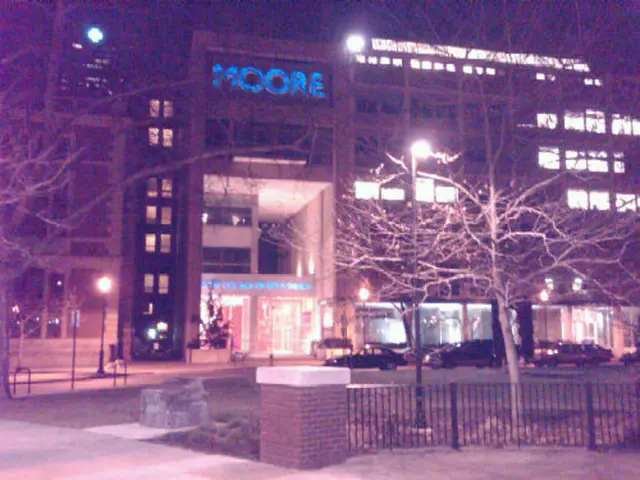8 Prominent Indications That Demand Urgent Foundation Repair
Every house's charm lies in its finishes, yet its foundation holds the real key to stability. Just like how a tiny crack in the foundation can worsen over time, leading to leaks and water intrusion, a small problem with the foundation can create big messes in the rest of your home.
Take, for example, a foundation that's shifting due to poor soil conditions, excessive moisture, or even tree roots. This ain't no picnic either - it creates issues all over the house. Ever seen a home's foundation sinking at one or more sides? Uneasy feeling, ain't it?
To keep the drama out of your abode, keep an eye out for these eight signs that your foundation might need some TLC:
- Drywall with Cracks - Minor vertical cracks in the drywall can occur naturally, but large cracks are a clear sign of an unstable foundation. Don't hesitate to call in the big guns - foundation professionals - to help diagnose and fix the issue.
- Poor Water Drainage - If your property struggles to get rid of water, you're inviting foundation issues down the line. Homeowners can improve drainage by regrading the yard, adding underground drainage systems, and fixin' up the gutter system. But if the damage is already done, it might be time to bring in the pros.
- Sticky Doors and Windows - A door or window that's sticky can be a result of excessive moisture, but it can also mean your foundation is settling, shifting, or sinking. This imbalance in the home's structure can cause the framing around doors and windows to warp, leading to sticking doors and windows. Let the foundation repair professionals handle this one.
- Cracking or Bulging Floors - Floors that have cracks or bulges can signal a serious problem with the foundation. When the foundation settles, shifts, or sinks, it puts pressure on the floors, causing them to shift out of level. The solution here? You guessed it - foundation repair experts!
- Cabinets or Countertops Separating from Walls - When the floors and walls shift due to foundation issues, structures like cabinets and countertops might also shift, creating gaps. If these gaps continue to grow or appear in multiple locations, call a foundation specialist.
- Large Cracks on Foundation Walls - While small cracks can be fixed by DIYers, larger horizontal or zigzag cracks could indicate a serious foundation problem. If you notice these types of cracks or if they continue to widen over time, call a foundation expert.
- Bowing Walls and Window Gaps - This is a dangerous situation. When the foundation shifts or sinking, it can cause walls to bulge or bow and window gaps to form. Don't try to tough it out - the foundation should be assessed and repaired by a professional.
- Visible Exterior Siding Issues - Warped, buckled, or bulging siding, noticeable gaps between siding planks or bricks - these are all signs that the foundation might need repair. Ignoring these signs could mean extra expenses for repairing the foundation and the rest of the house.
Stay ahead of foundation issues to avoid bigger headaches down the road. Don't let your castle turn into a wreck!
Types of Foundations and the Pros and Cons of Each:
Foundations come in different types, each with its own set of advantages and disadvantages. Check them out:
- Slab Foundation - This is the most common foundation type in warmer climates due to its simplicity and affordability. It's a solid concrete slab sprawled out over the excavated lot. It's quick to build, but it's not the best choice for colder climates or areas with expansive soils.
- Crawl Space Foundation - A crawl space foundation consists of concrete walls and a short crawl space between the ground and the bottom of the floor. Compared to slab foundations, they're more expensive to build but provide extra access for repairs and offer better moisture control.
- Basement Foundation - The most expensive foundation type but also the sturdiest. Basements offer extra living space, storage, and can improve a home's energy efficiency. However, building a basement foundation requires more labor and materials, making it the priciest choice.
In the end, choosing the right foundation comes down to factors like your budget, the climate, and your desired living space.
Enrichment Data:
Overall:
Common Signs of a Foundation in Need of Repair:
- Cracks in Walls or Floors - Cracks can appear in various forms, such as hairline cracks or larger ones, both vertically and horizontally. Horizontal cracks are particularly concerning as they may indicate pressure on the foundation.
- Doors and Windows Not Closing Properly - If doors and windows stick or have gaps, it could be due to foundation movement causing misalignment.
- Uneven or Sagging Floors - Floors may slope due to uneven foundation settling or moisture-related issues. Use a level or marble to check for evenness.
- Exterior Warning Signs - Gaps between bricks or siding could indicate foundation shifting. Leaning chimneys or exterior cracks are also red flags.
- Water Pooling Near the Foundation - Water accumulation can weaken the foundation over time.
- Home improvement ideas for ailing foundations might include employing foundation professionals to address large cracks in drywall, which signal an unstable foundation.
- To maintain a house's stability, remodeling advice planning could involve better water drainage through yard regrading, underground drainage systems, and gutter system fixes, reducing the potential for future foundation issues.
- A shifting foundation, possibly caused by poor soil conditions, excessive moisture, or tree roots, can lead to uneasy feelings like seeing a home's foundation sinking at one or more sides.
- Maintenance repairs, as professional advice suggests, are necessary when floors, especially those with cracks or bulges, point to foundation problems, leading to home instability.
Probably, understanding these common signs and taking preventive measures can help avoid foundation disasters and keep the home in balanced harmony.






